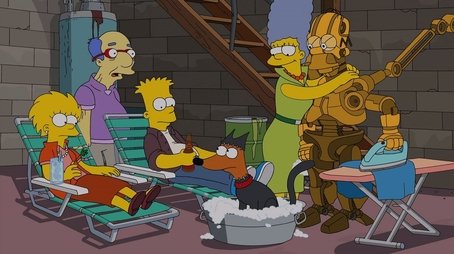
Sorry, we have not watched this yet.

Set in the future, Homer has a new clone for every time he dies. Lisa is married to a zombie version of Milhouse, while Bart deals with custody issues with his ex-wife, Jenda. Each defines what love means to them.
Sorry, we have not watched this yet.